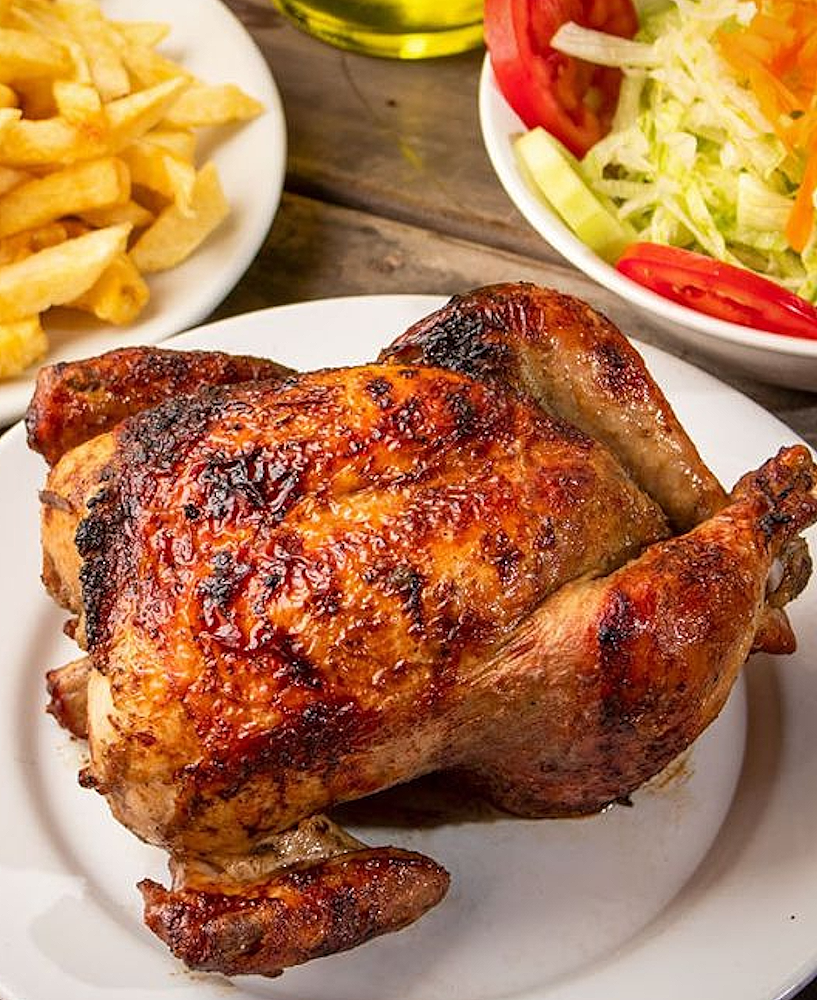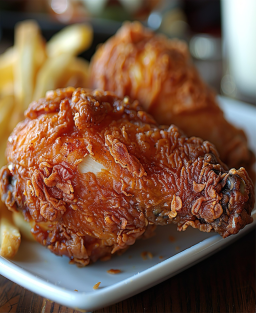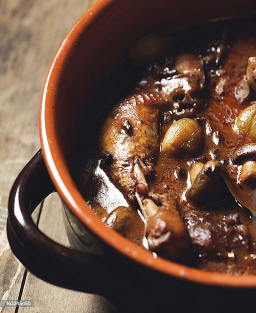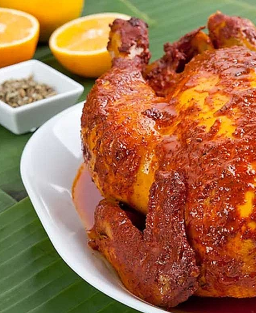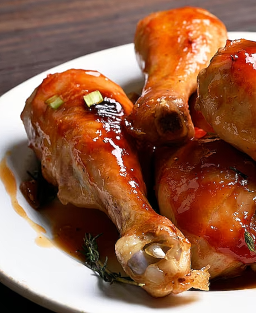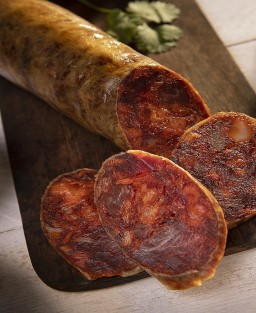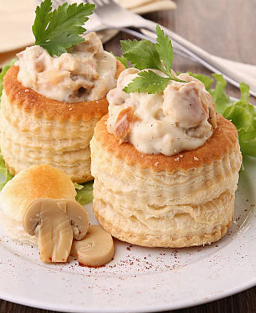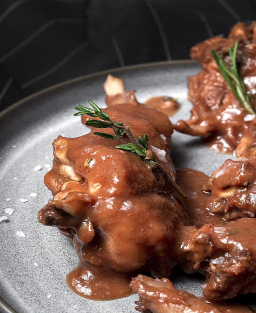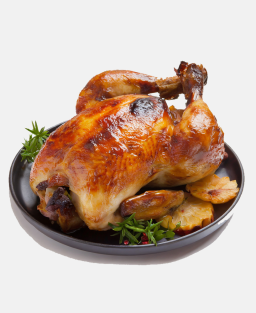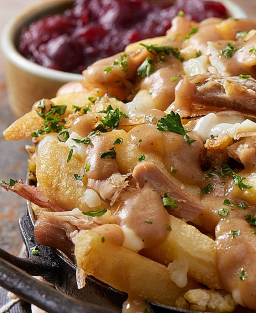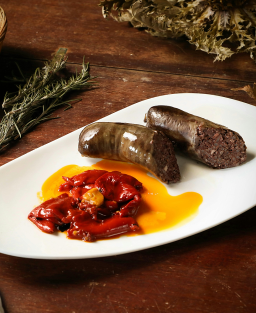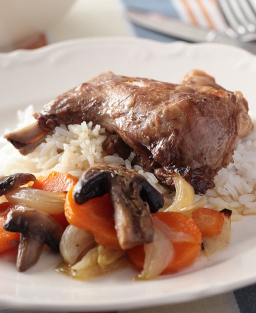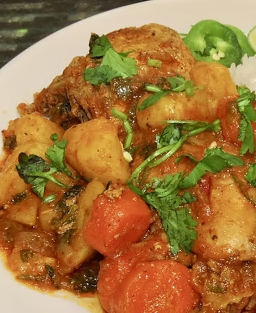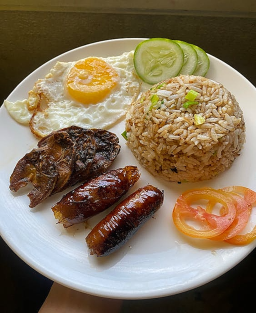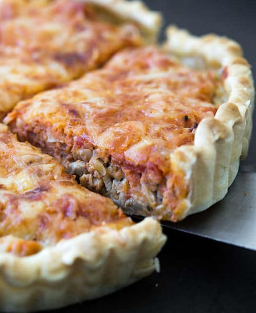- Out-of-Stock
Traditional Peruvian Pollo a la Brasa recipe: smoky flavor, authentic marinade
Traditional Peruvian Pollo a la Brasa recipe: smoky flavor, authentic marinade
Pollo a la Brasa is a typical dish of Peruvian gastronomy, consisting of chicken roasted over charcoal, wood, or gas, cooked in a rotating oven. Today it is one of the most consumed dishes in Peru, even surpassing ceviche and other popular specialties. It is recognized as a "Culinary Specialty of Peru" by the Ministry of Culture, and its importance is such that it is included in the official calculation of the family consumption basket.
Origins
The dish originated in the 1950s in Santa Clara, in the Ate district of Lima. It is credited to Roger Schuler, a Swiss immigrant settled in Chaclacayo, who initially raised chickens without success. One day he observed his cook roasting a chicken over embers, which gave him the idea for a more efficient system. He partnered with engineer Franz Ulrich, who invented a special rotating oven called the "rotombo," allowing several chickens to be cooked evenly.
This system led to the opening of the restaurant La Granja Azul on December 19, 1949, considered the starting point of Pollo a la Brasa as we know it today.
Evolution
In 1957, another emblematic restaurant, El Rancho, opened in Lima and helped popularize the dish in the city. Initially reserved for the upper classes, Pollo a la Brasa became more accessible in the 1970s, turning into a family and popular dish.
Originally, the chicken was simply salted, grilled over charcoal, served with fries, and eaten with hands. Today the dish remains basically the same, although cooking methods and equipment have evolved.
Ovens now run on charcoal, wood, or gas, and their design has been perfected by specialists like Heriberto Ruiz, a former collaborator of Ulrich.
Traditional Peruvian Pollo a la Brasa
This version draws on original methods used in homes or stone/charcoal ovens, with simple, typical ingredients and a marinade deeply rooted in Peruvian culture.
Ingredients (for 1 whole chicken)
For the marinade:
-
1 whole chicken (approx. 1.5 kg), preferably free-range
-
3 tablespoons chicha vinegar or cider vinegar (chicha vinegar is traditional in Peru)
-
1 tablespoon lime juice
-
6 crushed garlic cloves
-
1 tablespoon ground cumin
-
1 tablespoon ground black pepper
-
2 tablespoons sweet paprika or ground ají panca (if available, for more authenticity)
-
1 tablespoon sea salt
-
1 tablespoon fresh rosemary (or dried)
-
2 tablespoons oil (corn or peanut), or animal fat if unavailable
-
1 teaspoon oregano
Ancestral cooking (ideally)
Earthen or charcoal oven, or covered barbecue with charcoal and fruit tree wood (mango, Andean eucalyptus, etc.)
Preparation
-
Prepare the marinade
In a large mortar (or bowl if no mortar available), mix all ingredients: garlic, cumin, ají panca (or paprika), salt, pepper, rosemary, oregano, oil, vinegar, lime. Crush or mix well until a thick, aromatic paste forms. -
Marinate the chicken
Clean the chicken well.
Split it down the back to flatten ("a la brasa" literally means "on the embers," so the chicken is often flattened or butterflied).
Rub the marinade generously all over the chicken, including under the skin if possible.
Let marinate at least 12 hours (ideally 24h) in the fridge, wrapped in banana leaves or clean cloth, as was done before plastic bags were used. -
Cooking
Light a wood or charcoal fire, wait until the embers are red hot.
Cook the chicken on a spit (turned by hand or with a rustic system) or on a grill in a closed oven with indirect heat.
Slow cook: 1.5 to 2 hours depending on chicken size, turning regularly and basting with marinade juice.
Goal is a crispy, golden skin and juicy, smoky-flavored meat.
Traditional accompaniments
-
Papas doradas (Andean potatoes roasted in ashes or boiled with skin)
-
Salsa criolla: sliced red onion, lime, ají amarillo, coriander
-
Homemade sauce: simple mix of oil, ají, garlic, lime, and salt
Cultural notes
Pollo a la Brasa was born in the 1950s, but its roots go back to ember-cooking practices typical of many Andean cultures.
Originally reserved for special occasions, cooked slowly and carefully in family settings.
The smoky flavor comes from wood, not artificial aromas, and the marinade relies on natural ingredients.











